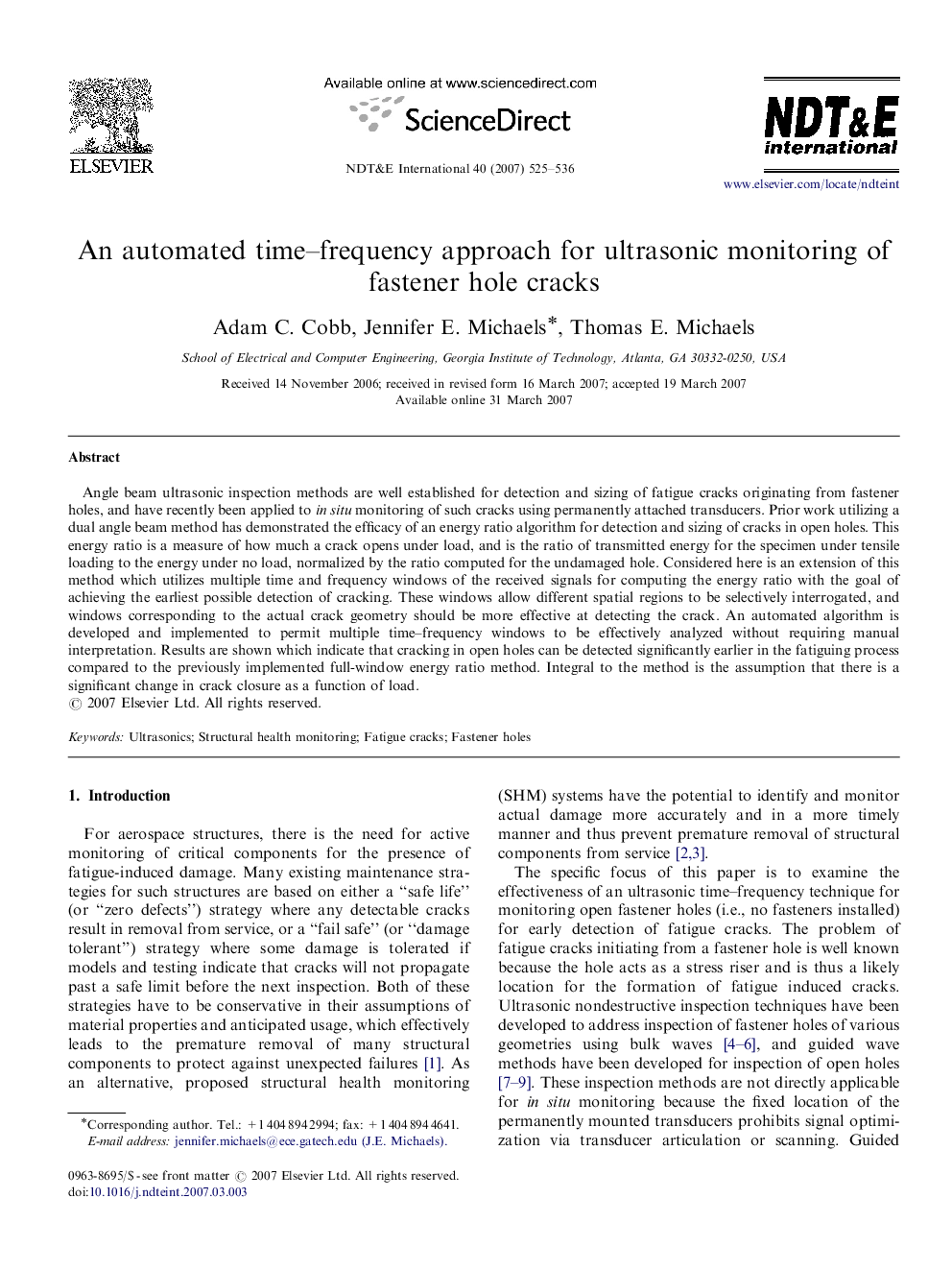| Article ID | Journal | Published Year | Pages | File Type |
|---|---|---|---|---|
| 295895 | NDT & E International | 2007 | 12 Pages |
Angle beam ultrasonic inspection methods are well established for detection and sizing of fatigue cracks originating from fastener holes, and have recently been applied to in situ monitoring of such cracks using permanently attached transducers. Prior work utilizing a dual angle beam method has demonstrated the efficacy of an energy ratio algorithm for detection and sizing of cracks in open holes. This energy ratio is a measure of how much a crack opens under load, and is the ratio of transmitted energy for the specimen under tensile loading to the energy under no load, normalized by the ratio computed for the undamaged hole. Considered here is an extension of this method which utilizes multiple time and frequency windows of the received signals for computing the energy ratio with the goal of achieving the earliest possible detection of cracking. These windows allow different spatial regions to be selectively interrogated, and windows corresponding to the actual crack geometry should be more effective at detecting the crack. An automated algorithm is developed and implemented to permit multiple time–frequency windows to be effectively analyzed without requiring manual interpretation. Results are shown which indicate that cracking in open holes can be detected significantly earlier in the fatiguing process compared to the previously implemented full-window energy ratio method. Integral to the method is the assumption that there is a significant change in crack closure as a function of load.
